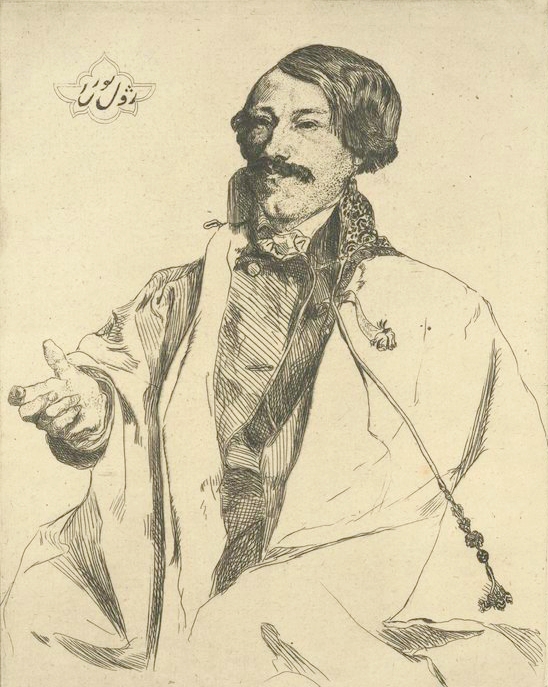
Jules Joseph Augustin Laurens, commonly known as Jules Laurens, (26 July 1825, Carpentras – 5 May 1901, Saint-Didier, Vaucluse) was a French artist in drawing, painting, and lithography who is remembered above all for his Oriental works.
One of a family of five, at the age of 12 he went to live with his brother, Jean-Joseph (1801–1890) in Montpellier where he attended the city’s art college while benefitting from his brother’s artistic contacts. He went on to Paris, studying under Paul Delaroche at the École des Beaux-Arts, first exhibiting in 1840 and completing his studies in 1846.[1]
Chosen by the geographer Xavier Hommaire de Hell to join him on an extended scientific journey to Turkey and Persia, Laurens made over a thousand drawings of the sites, costumes and people he encountered on his travels. They included many portraits of Persian personalities. His biography “Nazar-Andaz” gives an account of de Hell’s death at Isfahan in August 1848. Thanks to the French ambassador, Laurens was able to reach Teheran from where he sent back de Hell’s notes together with his own drawings. Hundreds of them were presented in the Atlas historique et scientifique, the fourth volume of the Voyage en Turquie et en Perse published by de Hell’s wife. Some of Laurens’ lithographs were published in L’Illustration and Tour du Monde, both popular periodicals, while the originals, together with his early watercolours were given to the library of the École des Beaux-Arts.[1] Laurens also painted examples of qajar art while in Persia, including his Danseuse au tambourin.[2]

